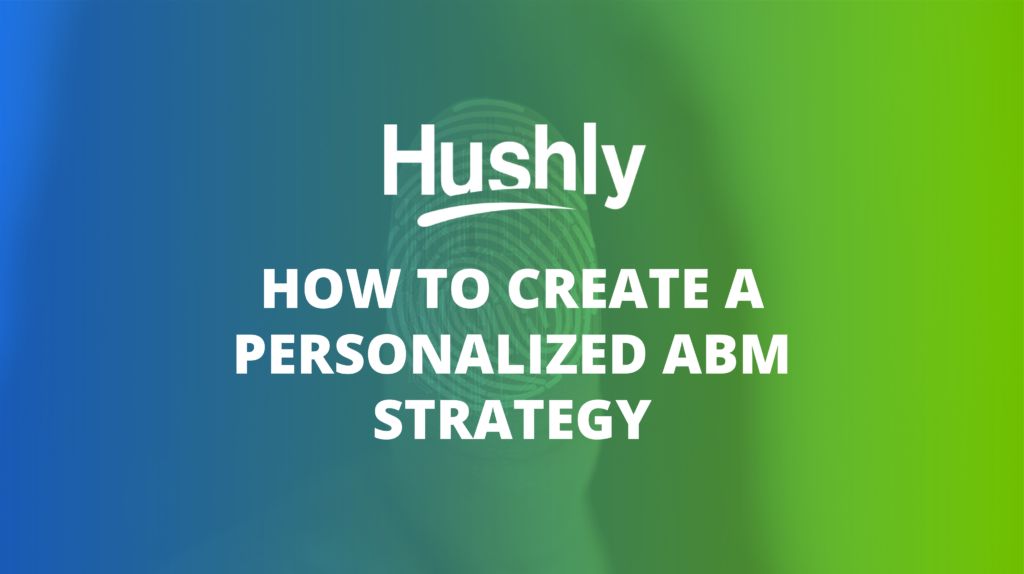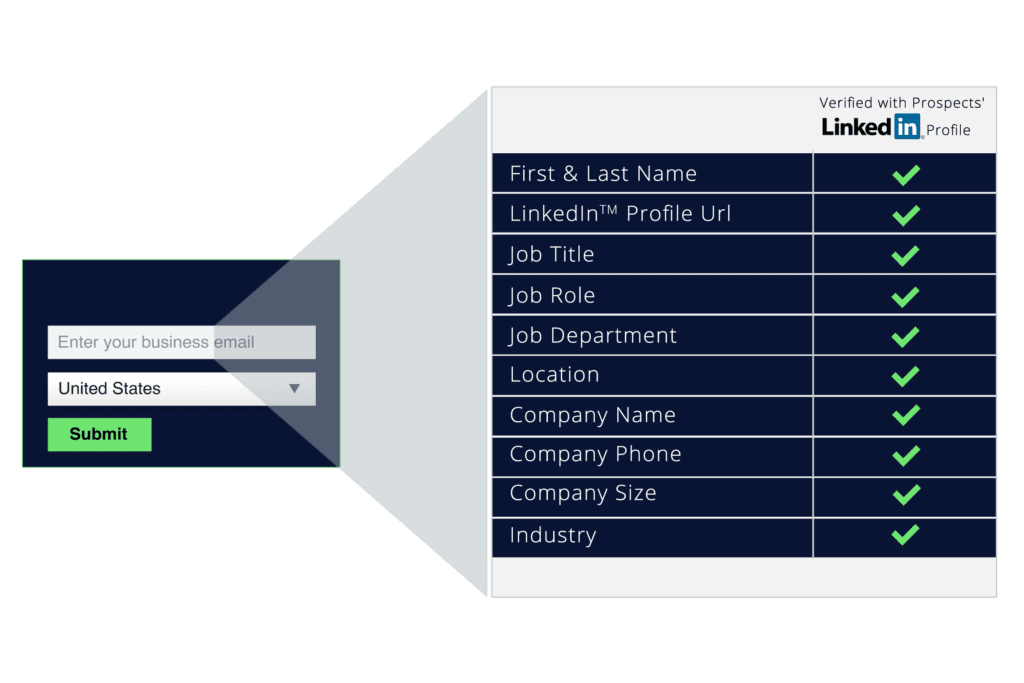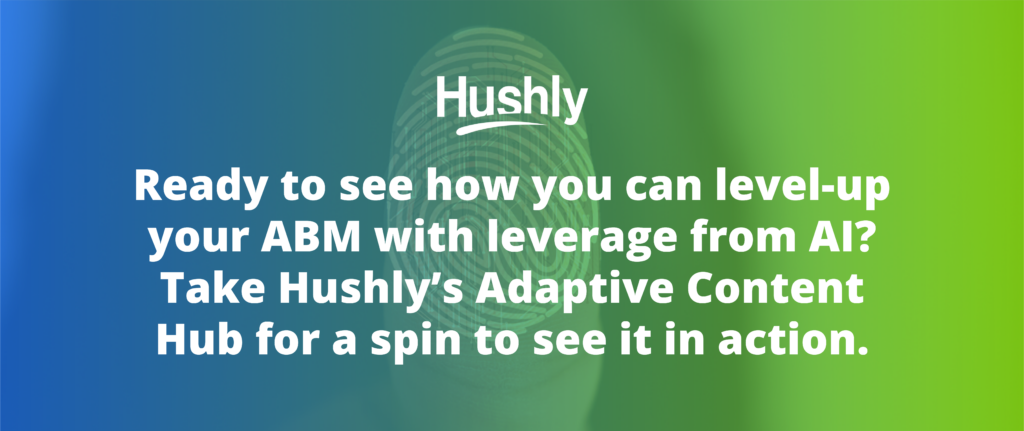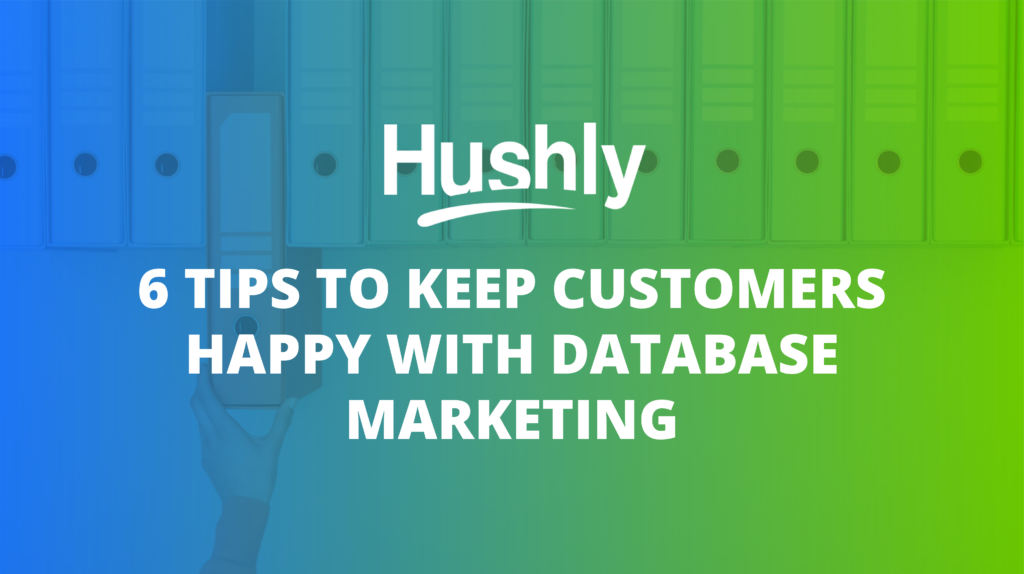Filters
Content Type
Topic
How to Create a Personalized ABM Strategy

Account-based marketing is here to stay.
With so much technology at your fingertips, it’s almost foolish for B2Bs NOT to have a dedicated ABM strategy.
ABM works when done right because it’s highly personalized and relevant. Your B2Bs expect personalization with 85% saying they’ll dismiss a vendor that doesn’t personalize the very first interaction.
Businesses say their ABM campaigns are worth the money and effort too. 97% of those with ABM say it delivers a higher return than traditional marketing techniques.
It makes sense: ABM is naturally relevant.
However, ABM also involves higher risks along with nice rewards. You have to put in the work and research for that ROI.
Without proper research, strategy, and delivery, your ABM campaign will fall flat. Needless to say, you’ll have to eat a ton of money and time as a loss.

7 Steps to Creating an Effective ABM Strategy
By following a few key steps and taking advantage of the right martech tools, you can win at your ABM strategy. Here’s how.
1. Identify Your Accounts to Target
Before anything else, you’ll have to figure out which accounts you’ll target so you can strategize how to win them over.
The key here is research and insight.
Start by looking at accounts you’ve already won. You could develop an ABM strategy for them to prevent churn and upsell new products or services. Plus, targeting your key customers will also help you hone your ABM tactics before you develop a new ABM campaign to target fresh leads.
When you’re ready to expand, do some market research and look for gaps in companies you could fill. Do you offer anything your competitors can’t match? Which companies would be most likely to switch? Data is key here.
2. Create Highly Relevant Content
An effective ABM strategy starts with highly relevant and valuable content. Focus on problems your target accounts face and how to solve them.
Strive for nuance here as much as possible.
63% of senior execs say the content they consume during the buying process is too generic and that simply won’t fly in an ABM campaign. Authority is an absolute must.
All the AI and martech tools in the world can’t help you if your content isn’t authoritative, informative, relevant, and hard-hitting.
It’s also important to create content in formats your accounts want to consume. Aim for a healthy mix of video explainers, case studies, eBooks, and audio formats like podcasts.
3. Use an Adaptive Hub to Distribute Content on Your Site
Traditional blog interfaces are outdated. No one has time to sift through broad categories and your recent posts to find the information they need or want.
When you’re publishing so much high-quality content, the last thing you want to do is force leads and prospects to dig for it. You want it accessible, right?
An Adaptive Content Hub uses the power of AI to provide a personalized experience to every visitor. Instead of forcing them to search your site, AI gives them personalized content recommendations based on their behavior and the behavior of previous similar visitors.
4. Implement Self-Nurturing Landing Pages
Self-nurturing landing pages bring content bingeing to your B2B website.
B2Bs complete up to 90% of the buyer’s journey alone without contacting anyone from your company. Meanwhile, average B2B conversion rates hover around 1%.
Instead of presenting prospects and leads with dead-end landing pages, you can use AI to offer a constant stream of personalized content recommendations – just like Netflix!
Visitors will stay on your site longer and bounce rates go down. Plus, the algorithms are designed to gently nurture leads with content that guides them towards converting.
5. Set up Personalized Email Campaigns
Email marketing is one of the most effective tools for nurturing leads in your ABM strategy. Campaigns work because email is easy to automate, segment, and personalize with minimal effort.
Get your campaigns ready to go before a lead ever signs up for your list and create an entire series to guide leads towards conversion. You’ll need:
- Welcome
- Onboarding
- Case studies or tutorials
- Events and webinars
- Surveys and polls
Make sure each campaign is highly personalized for the accounts you’re targeting. You can even create unique email series for distinct roles at each company – from C-suite employees down to end users.
This is where AI verification comes in handy.
Instead of relying on retroactive and outdated data, AI-driven lead verification systems check every email address and build profiles based on publicly available information on LinkedIn.

Source: Hushly
6. Send out Social Media Retargeting Ads
LinkedIn is also an effective retargeting tool for your ABM strategy.
Once you have account-specific content on your website, you can paste the URL of a relevant post into LinkedIn’s campaign creator and ask the platform to target people who visited that specific page.
Use this as an opportunity to keep the conversation going.
Whatever problem you addressed in the blog post, follow up with recent stats or insights in your retargeting campaigns.
7. Prepare a Social Selling Strategy
Some industries attribute over 50% of their revenue to social selling tactics!
Reviews are critical in the consumer sector because people trust other consumers more than the brands advertising to them. You can take advantage of this same concept in B2B with social selling.
Find key social accounts and blogs your target companies trust and consume. Build conversations here and ask questions. You can gain some key insights this way.
Add AI to Your Site and Skyrocket Your ABM Strategy
It’s impossible to succeed in your ABM strategy without the right pieces of technology. Artificial intelligence makes it easy to personalize every interaction on your website. Your visitors get a unique experience whether you’ve collected their lead details or not thanks to the power of machine learning.
Plus, it’s easy to implement. Hushly AI just takes a few hours to set up and you’re good to go. You’ll never pay for fake leads or using the platform – just genuine leads.
The post How to Create a Personalized ABM Strategy appeared first on Hushly.



